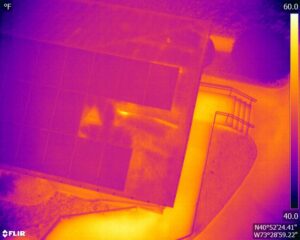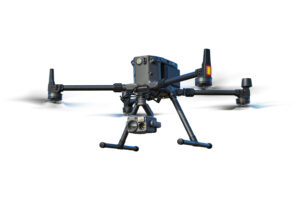Seeing Beyond the Surface: AeroSpect’s Boston Aerial Infrared Thermography Services

Two technologies have emerged as game-changers for building inspections in recent years: LIDAR scanning and infrared imaging. AeroSpect is utilizing these advanced methods in Boston and is revolutionizing how we assess structures. They conduct building inspections by using drones to perform these scans and capture images.
Understanding the significance of these technologies is important whether you’re a construction professional or a property owner. They can help you make informed decisions and ensure the safety and longevity of buildings. Let’s explore AeroSpect’s Boston aerial infrared thermography services and their benefits.
The Significance of Advanced Technology
Traditional methods of building inspections have served us well for many years. However, structures become more complex and regulations more stringent. There is a growing need for more precise and comprehensive assessment techniques. This is where advanced technologies like LIDAR scanning and aerial infrared thermography step in.
We can see beyond what the human eye can perceive with these tools. They allow us to delve deep into any structure and identify issues that would remain hidden during a traditional building inspection. This level of precision and detail is crucial, especially in a city like Boston. Historical buildings and modern skyscrapers coexist in Boston, and each has its unique set of challenges.
LIDAR Scanning: A Precision Tool
LIDAR, which stands for Light Detection and Ranging, is a remarkable technology that uses laser pulses to measure distances and create highly detailed three-dimensional models of structures. This tool plays a pivotal role in drone building inspections.
How LIDAR Works: LIDAR scanners emit rapid laser pulses that bounce off surfaces and return to the scanner. By measuring the time it takes for each pulse to return, the scanner creates precise distance measurements. These measurements are then used to generate a three-dimensional map of the building or structure.
Creating Comprehensive 3D Models: The resulting 3D models are incredibly detailed and provide a comprehensive view of the building’s geometry. Every nook and cranny is detailed in the model. This allows inspectors to assess the structure with extraordinary accuracy.
AeroSpect’s LIDAR Expertise
AeroSpect’s team is at the forefront of utilizing LIDAR scanning for drone façade inspections in Boston. Their expertise in operating these cutting-edge tools ensures that every inspection is conducted with precision and attention to detail.
But why is this expertise so important? Simply put, having experienced professionals operate LIDAR scanners is the difference between a comprehensive assessment and a superficial one. The data collected during the scanning process must be interpreted correctly to identify potential issues accurately. AeroSpect’s team possesses the skills and knowledge required to do just that.
Infrared Technology: A Key Component
Infrared technology is another vital component of AeroSpect’s drone building inspections. It relies on the principle that different materials emit varying levels of heat. Inspectors can pinpoint issues that may indicate underlying problems by capturing these variations with infrared imaging.
- Detecting Variances in Heat: Infrared cameras detect temperature variations on the surface of a building. This can reveal issues like water infiltration, inadequate insulation, or electrical hotspots. These problems that might otherwise remain invisible.
- The Synergy of LIDAR and Infrared: What makes AeroSpect’s drone inspections truly comprehensive is the synergy between LIDAR scanning and infrared technology. While LIDAR provides a detailed structural view, infrared imaging complements this by identifying issues that affect a building’s functionality and energy efficiency.
Advantages for Boston’s Building Industry
These advanced technologies bring substantial advantages for Boston’s construction and real estate sectors. They make inspections faster, more accurate, and less invasive. They also contribute to cost savings and enhanced safety by identifying issues early.
- Saving Time: Traditional inspections often require extensive manual measurements and invasive procedures. LIDAR and infrared technology speed up this process and reduce the time needed for assessments.
- Reducing Risks: Inspecting complex structures can be risky. LIDAR and infrared technology allow inspectors to assess buildings from a safe distance. This minimizes the need for physical access to potentially hazardous areas.
- Enhancing Accuracy: These technologies offer unparalleled accuracy in identifying structural deficiencies, energy inefficiencies, and potential safety hazards. Their ability to create precise 3D models and detect heat variations is improving the building inspection industry.
The Future of Building Inspections
 As technology continues to advance, building inspections will too. LIDAR scanning and infrared imaging represent the future of this industry. We can expect even greater efficiency and accuracy in assessing structures as these tools become more accessible and refined.
As technology continues to advance, building inspections will too. LIDAR scanning and infrared imaging represent the future of this industry. We can expect even greater efficiency and accuracy in assessing structures as these tools become more accessible and refined.
AeroSpect‘s drone building inspections using LIDAR scanning and infrared technology are transforming the way we evaluate structures in Boston. These technologies provide a depth of insight that was previously unattainable. They allow us to safeguard our buildings and preserve our history. Learn more about AeroSpect’s Boston aerial infrared thermography services by contacting them online today.
